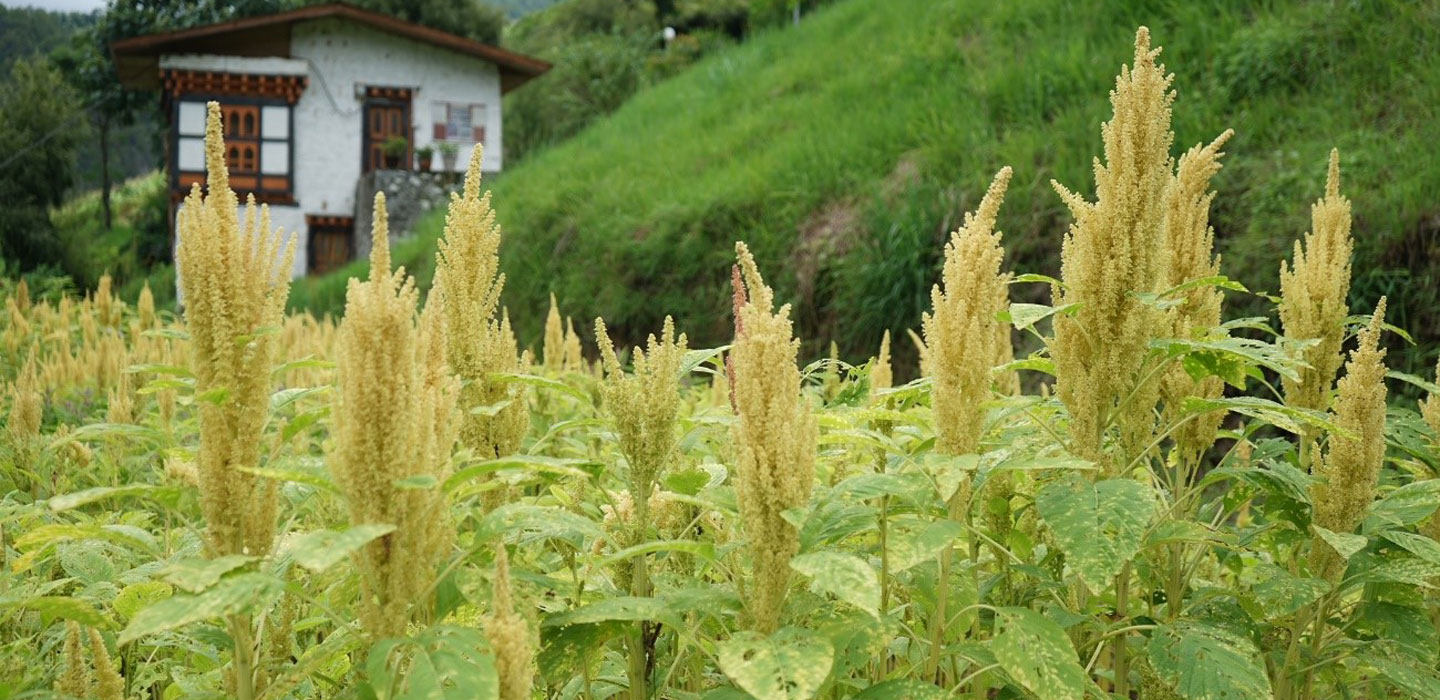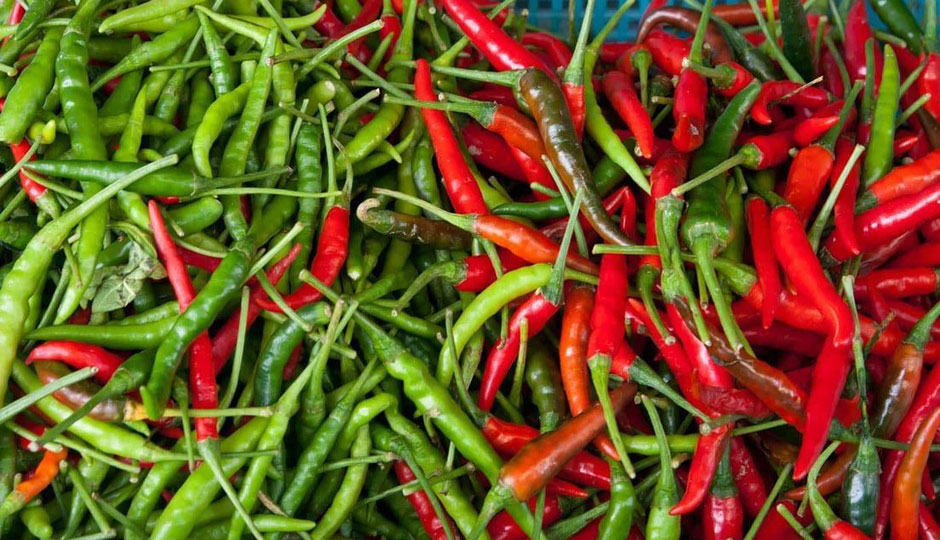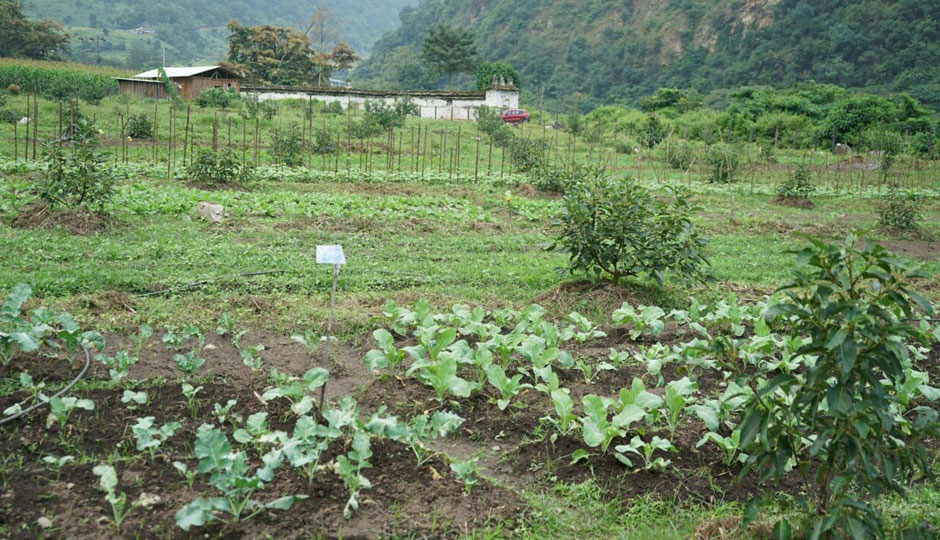How Bhutan is showing the way in building crop biodiversity
IFAD Asset Request Portlet
Asset Publisher
How Bhutan is showing the way in building crop biodiversity
Estimated reading time: 4 minutes
For countries like Bhutan – nestled in the high Himalayas, historically isolated and topographically challenging – ensuring food security is vital. Climate change, shrinking habitats, vanishing flora and fauna, and limited resources have all posed threats to a stable supply of food – and most recently, the COVID-19 pandemic and the related mitigation efforts have added another complication, disrupting lives and jobs and restricting food supply chains.
Crop diversity is a key component of the solution to many of these challenges. Diversity ensures a greater variety of genetic resources is available, allowing countries to plan a robust, efficient and secure food supply at more stable prices for their citizens. A varied food supply is also more nutritious and can help increase access to healthier food at more affordable prices.
But maintaining (or even improving) crop diversity requires a sea change in current agricultural practices. Committed to development activities that prioritize environmental concerns while ensuring inclusive socio-economic progress (more than 60 per cent of the country’s forest area is protected for all time, and it is the world’s only carbon-negative country), Bhutan, and its pursuit of food-related self-sufficiency, may point to one way forward.
Bhutan’s quest for crop biodiversity is motivated as much by necessity as by the embrace of sustainable policies. Over half of Bhutan’s people are employed in agriculture. Most are small-scale farmers, cultivating staple crops like rice, maize, barley, wheat and millets for household use. They remain vulnerable to changing weather patterns, especially as the monsoon is their main source of water. Even small variations in when the monsoon arrives and where it hits can have a significant impact on crop production. Factor in the rising incidence of extreme and adverse weather events, including glacial-lake outburst floods and flash floods, as well as pest outbreaks, and it is clear that climate change is already hitting Bhutanese farmers hard.
“My village is known for growing vegetables year-round. Farmers here used to grow a variety of commodities because the weather was good and we used to sell at the local market and in other districts,” says Jigme Thinley, 43, from Chali Gewog, Mongar block. Lately, though, Jigme and other farmers in his village have seen their production decline because of lasting changes in the weather. For these farmers, diversifying their crops – and trying new combinations – has been key to mitigating climate change–related effects such as these.
 |
| The introduction of chillies, among other crops, has allowed Bhutanese farmers to diversify their production. |
Jigme received hybrid seeds of vegetables and other commodities aimed at encouraging climate-resilient production from the IFAD-supported CARLEP programme, which works with implementing partners such as ARDC Wengkhar to help Bhutan’s farmers join sustainable value chains and transform their subsistence farms into market-driven ventures. Sonam Gyeltshen, deputy chief horticulture officer at ARDC Wengkhar, says crop biodiversity is essential for the sustainable production of food, maintaining food and nutrition security, nutrition and sustaining rural people’s livelihoods.
The programme provides Bhutanese farmers with agricultural inputs and training to help make their production more diverse and resilient. Inputs include seeds for vegetables such as chilli, tomato, onion, garlic, mustard green, asparagus, broccoli and mushroom, and for fruits such as plum, apricot, soft shell walnut, avocado, mango, litchi, dragon fruit and passion fruit. It also helps farmers establish integrated farms, or a multi-tier cropping system, which allows them to grow crops of different heights together on the same piece of land – thus making efficient and economical use of scarce land and water.
“We’re promoting fruit cultivation in a multi-tier cropping system because it not only diversifies income sources and enhances crop biodiversity, it also helps our smallholder farmers cope with the disruptions caused by the COVID-19 pandemic that has affected the global food system,” says Sonam. CARLEP also promotes the processing and value addition of local produce such as pumpkin, cassava, maize and buckwheat for similar reasons. To date, CARLEP has enabled crop diversification on 739 acres of land.
Jigme says that he’s been able to make better use of his land – and generate more income – by cultivating diverse vegetables and fruits, especially in winter. “I now grow maize, cucurbits and legume plants together to complement each other for better yields. I also grow radish with some spinach for the same reason,” he says.
 |
| Multi-tiered cropping models allow for a more efficient use of space. |
Tashi Phuntsho, 39, from Samdrup Jongkhar district, says he was able to earn a steady income by diversifying cultivation on his small parcel of land. “I used to grow cereals such as maize, mustard and grain legumes for my family and to feed my livestock. But with the support from CARLEP, I can produce more and better quality crops to sell in the market,” he says. Today, Tashi makes Nu. 0.2 million (US$2,700) annually from selling quinoa, maize, cereals and grain legumes. The nutrient-rich quinoa is popular with Bhutanese farmers because of its ability to grow in the toughest conditions – and because of the ready markets and support services provided by the Bhutanese government.
Growing a variety of crops, irrespective of farm size, has enabled small-scale farmers like Tashi to achieve household food security and self-sufficiency, increase their incomes and conserve crop biodiversity. Farmers value this increased diversity because it helps mitigate several different kinds of production risks, including pest infestations and crop diseases. With a production calendar that accounts for climate change and a wider variety of crops, these farmers now have a Plan B.
“I know I can rely on another crop if one fails,” says Jigme. “That’s a huge comfort.”
Learn more about IFAD’s work in Bhutan
Publication date: 10 December 2020